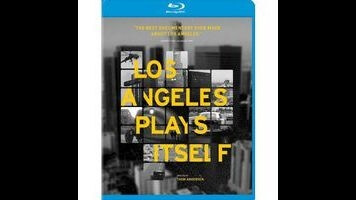“Los Angeles is the most beautiful city in the world,” Roman Polanski once proclaimed, before adding a small caveat: “provided it’s seen at night and from a distance.” Backhanded as that compliment may seem, it’s probably one of the nicer things anyone famous has written or said about the City Of Angels, a place whose nickname now seems ironically divorced of its reputation. Polanski’s words are recited, as proof of the bum rap the metropolis regularly receives, in Los Angeles Plays Itself, Thom Andersen’s sprawling, righteously indignant 2003 essay on the various ways his hometown is represented and misrepresented by the movies. Andersen, a teacher and longtime L.A. native, defends “the most photographed city in the world” by picking fights with films and talking shit about their makers. Beyond his own cranky ruminations, his main mode of communication is movie clips—around 200 total, all pulled without permission from films shot and/or set in Los Angeles.
For years, the only way to see this nearly three-hour documentary collage was either to attend a special screening—held once a year in L.A., much less frequently elsewhere—or to acquire a bootleg copy through “alternative means.” The plethora of unlicensed footage rendered slim the prospects of an official home-video release; just as Andersen never owned the rights to the movies he interrogates—classic noirs, studio blockbusters, lost curiosities—the audience could never expect to own his grand manifesto. But fair-use law has rescued Los Angeles Plays Itself from an eternity of sporadic exhibition, with Cinema Guild now offering spiffy DVD and Blu-ray packages. As exciting as it was to catch a screening of something that felt like audio-visual contraband, the film belongs on shelves and in classrooms; it’s too good, and too useful, to remain a rare pleasure.
Though narrator Encke King reads in the low register of a noir gumshoe, he is more cantankerous tour guide, traipsing to favorite haunts like a savvy local determined to deliver the true Los Angeles experience. How the city is used—in other words, to what end its structures and streets are filmed—is as important as how it’s depicted. Buildings hold a special interest to Andersen: He unspools the on-screen history of such landmarks as the Bradbury Building and Union Station, and illustrates Hollywood’s “war on modern architecture” by showing how cutting-edge domiciles are transformed by location scouts into villainous lairs. The common architectural critiques of the city are revealed to be contradictory; either the housing design is too eclectic (as Woody Allen complains in Annie Hall, critically excerpted here) or it’s too uniform. Elsewhere, Andersen laments Hollywood’s complete disregard for the geography of the city, pointing to a car chase scene from Cobra that seems to obliterate the 30 miles of pavement between the Venice Canals and the Los Angeles harbor.
Like many exceptional written essays, Los Angeles Plays Itself starts macro and then goes micro. Sweeping statements about the city’s character and how it’s assassinated give way to highly specific tangents—about the Hollywood “Walk Of Shame,” about Dragnet and the LAPD, about “high tourist directors” and “low tourist directors.” For minutes on end, the film devotes itself to pointed, sometimes hilarious dissections of individual movies. Blade Runner, which repurposes lots of iconic real-estate for its dystopian vision, is more “city planner’s dream” than “nightmare of Los Angeles,” as the Ridley Scott classic envisions a future in which L.A. has a vibrant downtown nightlife and no traffic jams. More probing are the inquiries into the city’s past, in which Andersen responds to the conspiracy theories posited by Chinatown—and its family-flick double, Who Framed Roger Rabbit?—by excavating the real, less glamorous corruption from which the movies distract. Cinema is deception, at least when Hollywood is fronting the bill.
A major influence on today’s school of Internet video essays and supercuts, Los Angeles Plays Itself is also an epic rant, an expression of civic pride, a playful history lesson, an act of first-rate muckraking, an archival editing triumph, and—per its director—a “city symphony in reverse.” Only in the final stretch, however, does the film reveal its most moving agenda: reclaiming Los Angeles for its silent majority, the underclass the movies—and, by extension, the world—like to pretend doesn’t exist. Andersen pulls clips from 1970s underground highlights, like Bush Mama and Killer Of Sheep, to pay tribute to a “cinema of walking,” the outsider response to Hollywood’s endless expressway of car movies. Beyond that, and perhaps more inherently, he makes the case for willful engagement with filmic product. “What if we watch with our voluntary detection, instead of letting the movies direct us?” the director says early on, in what sounds an awful lot like a description of how film criticism functions. Andersen’s fervent defense of his fair city becomes an ode to the discerning eye of cinephiles: We nitpick, his magnum opus argues, because we love.
Los Angeles Plays Itself is available on iTunes and on Blu-ray and DVD from Cinema Guild.









































